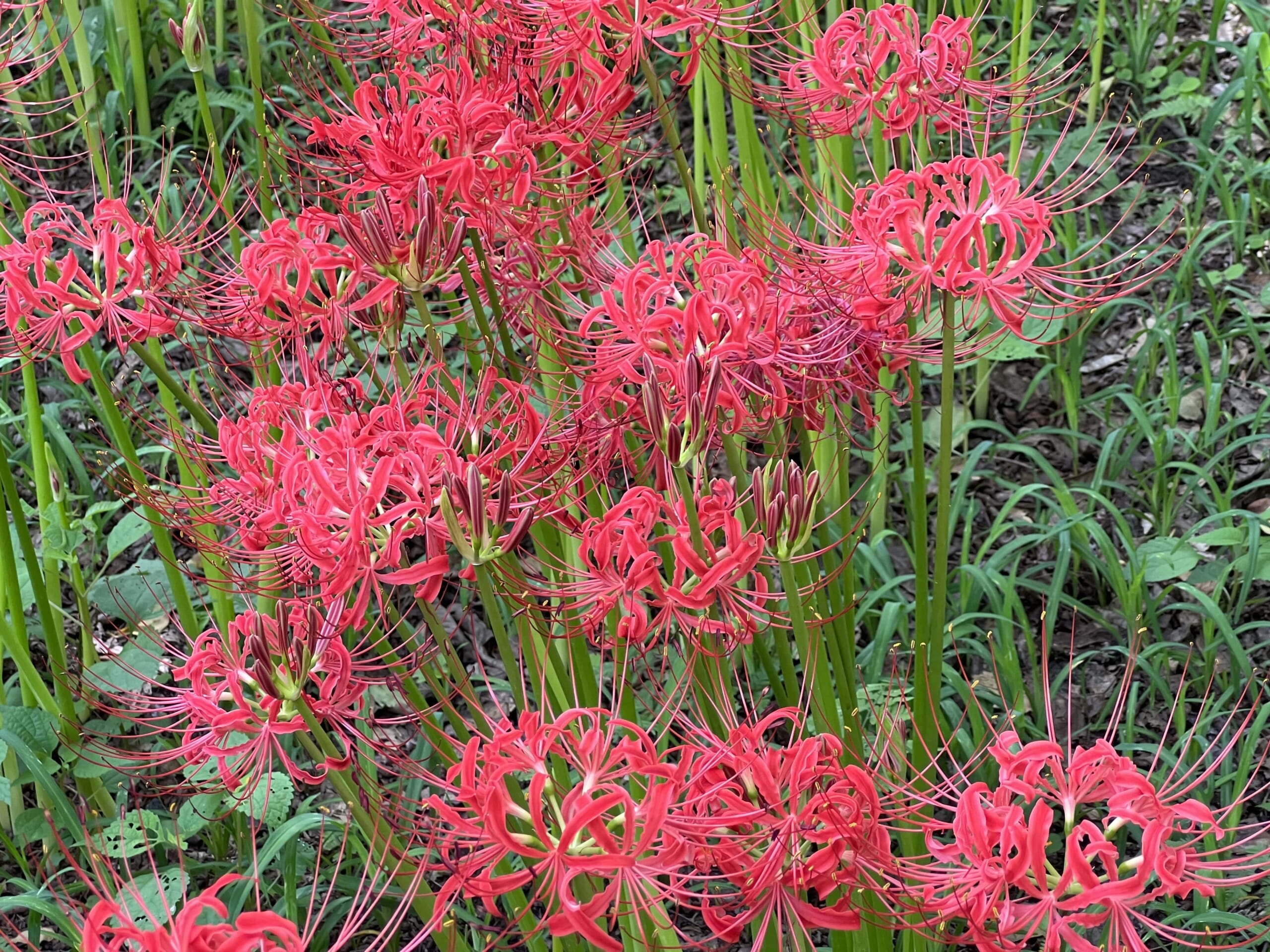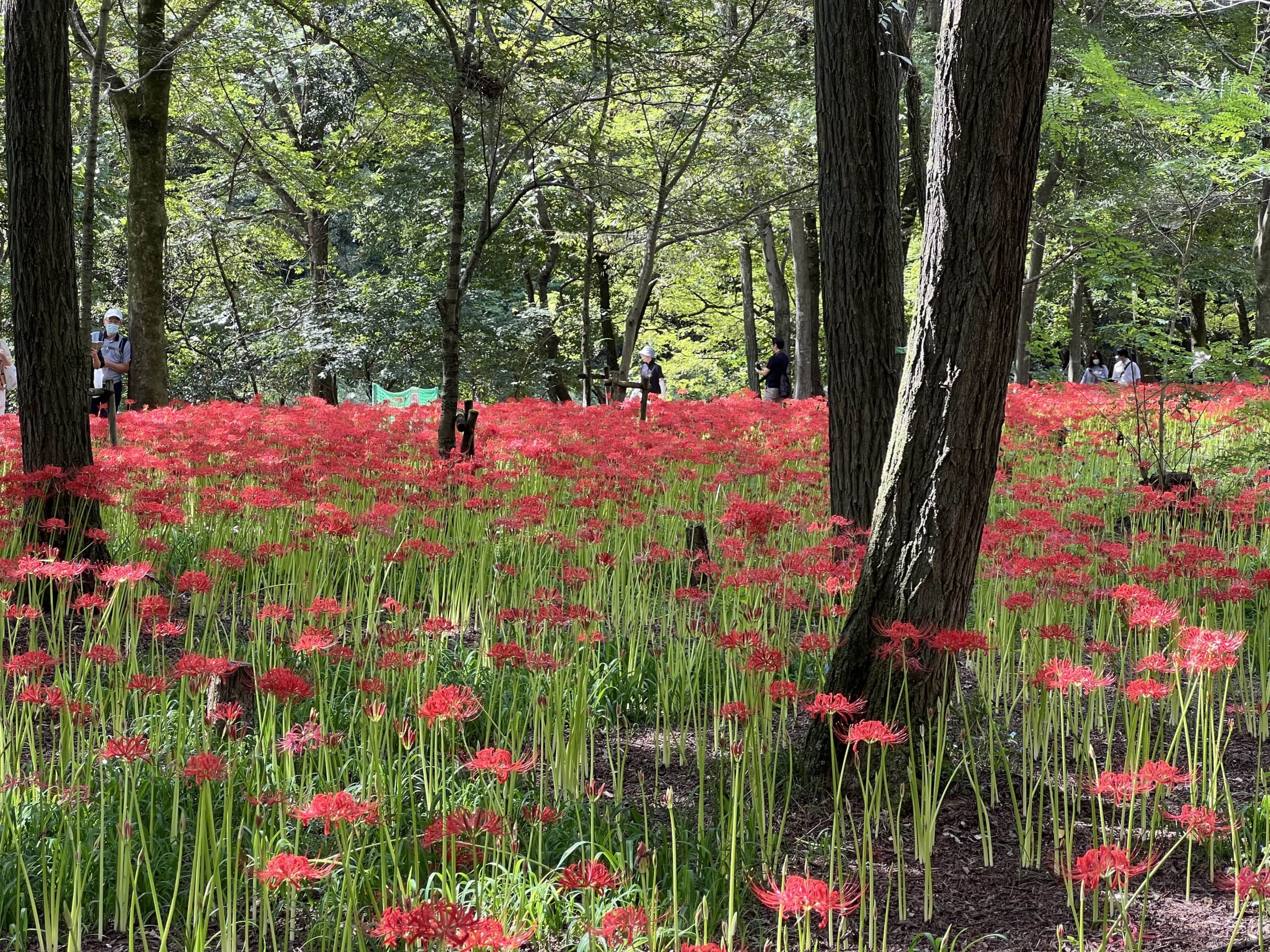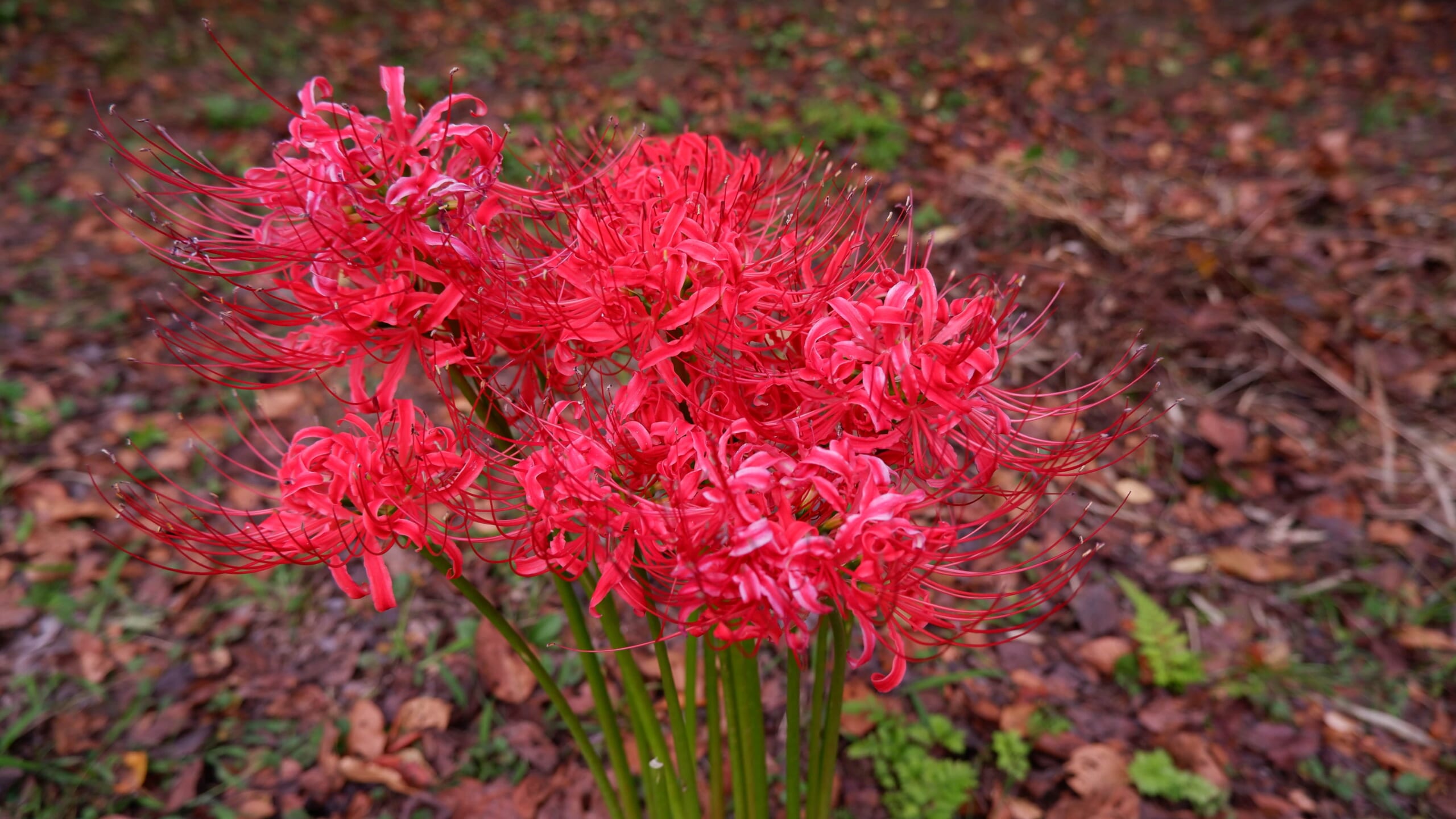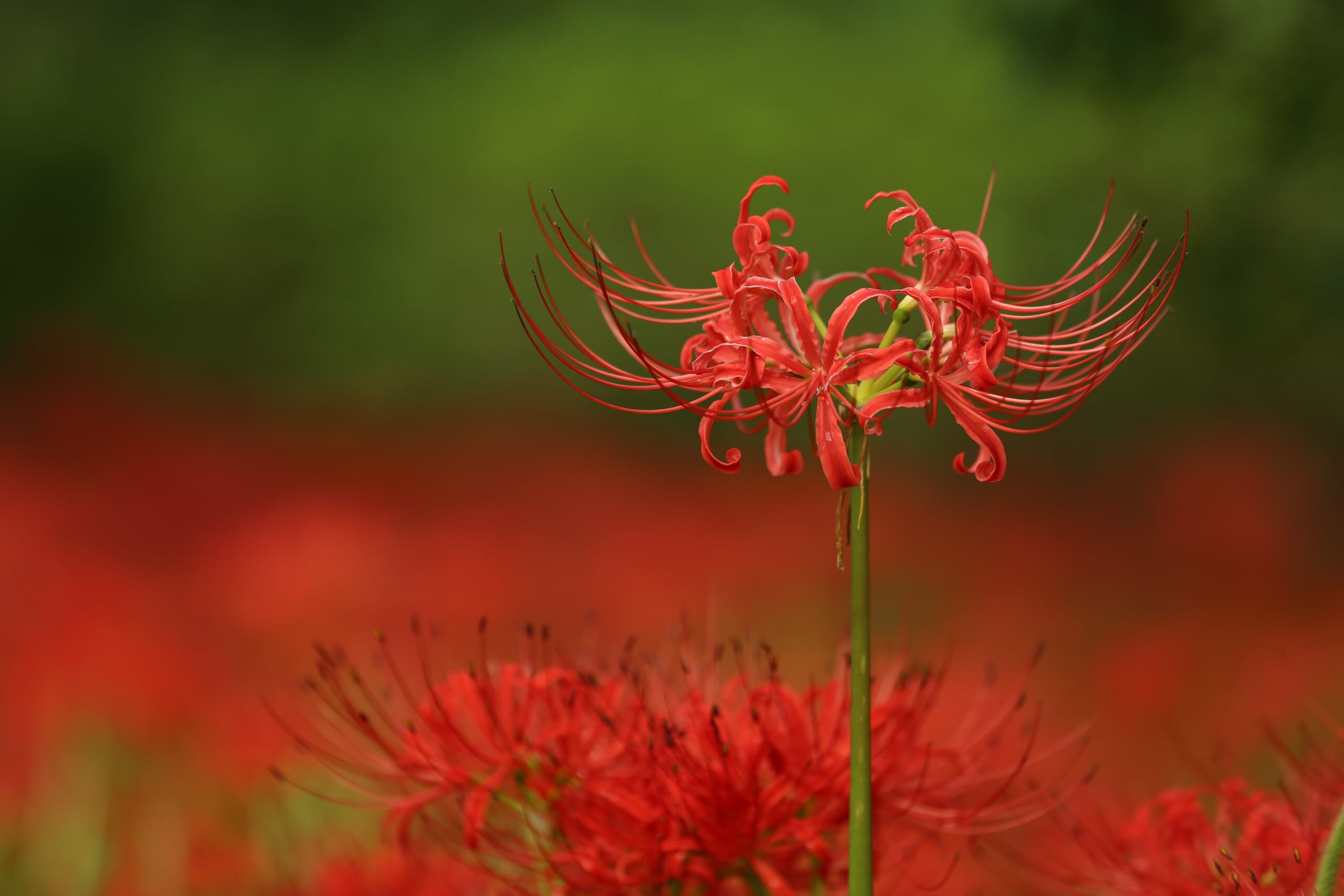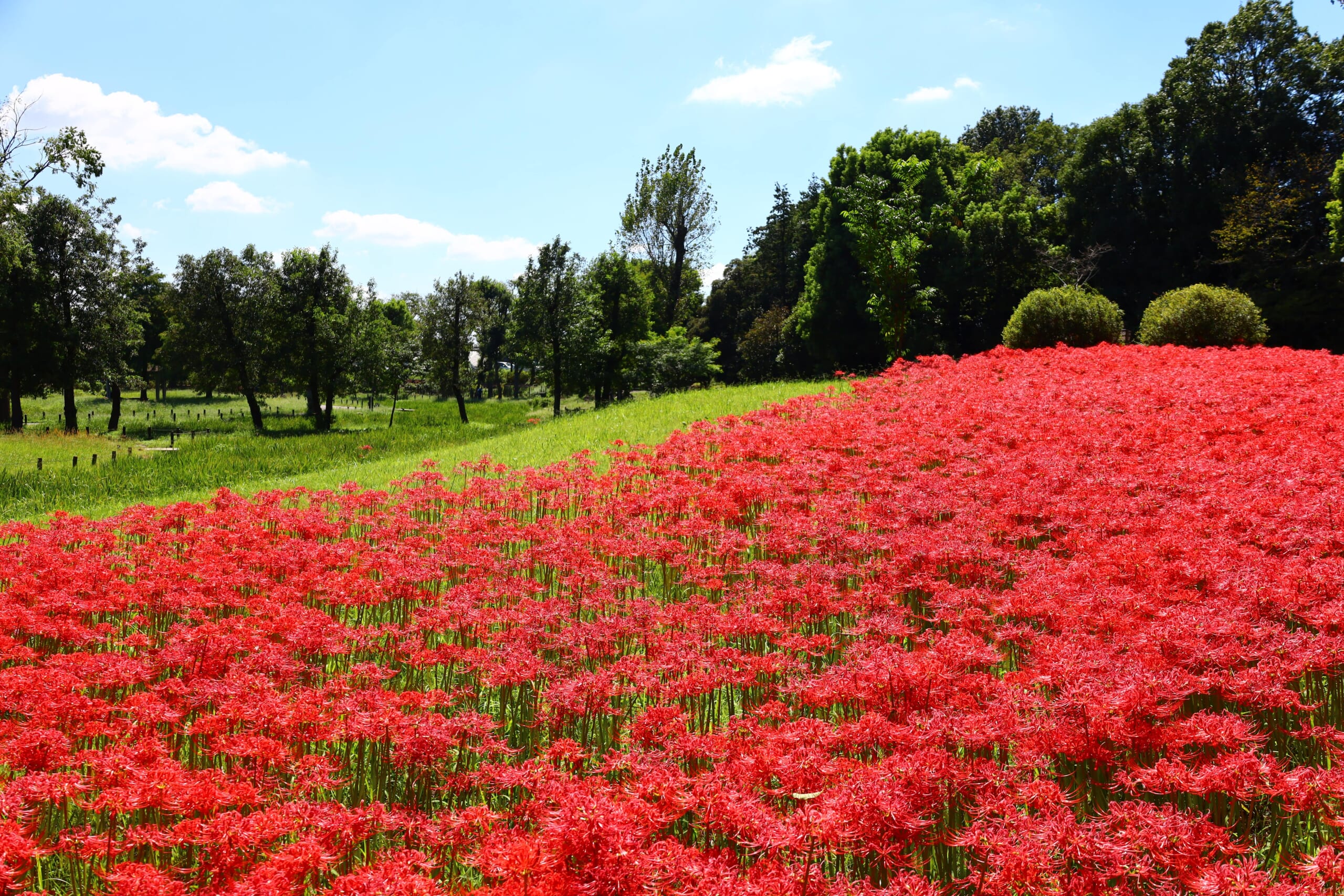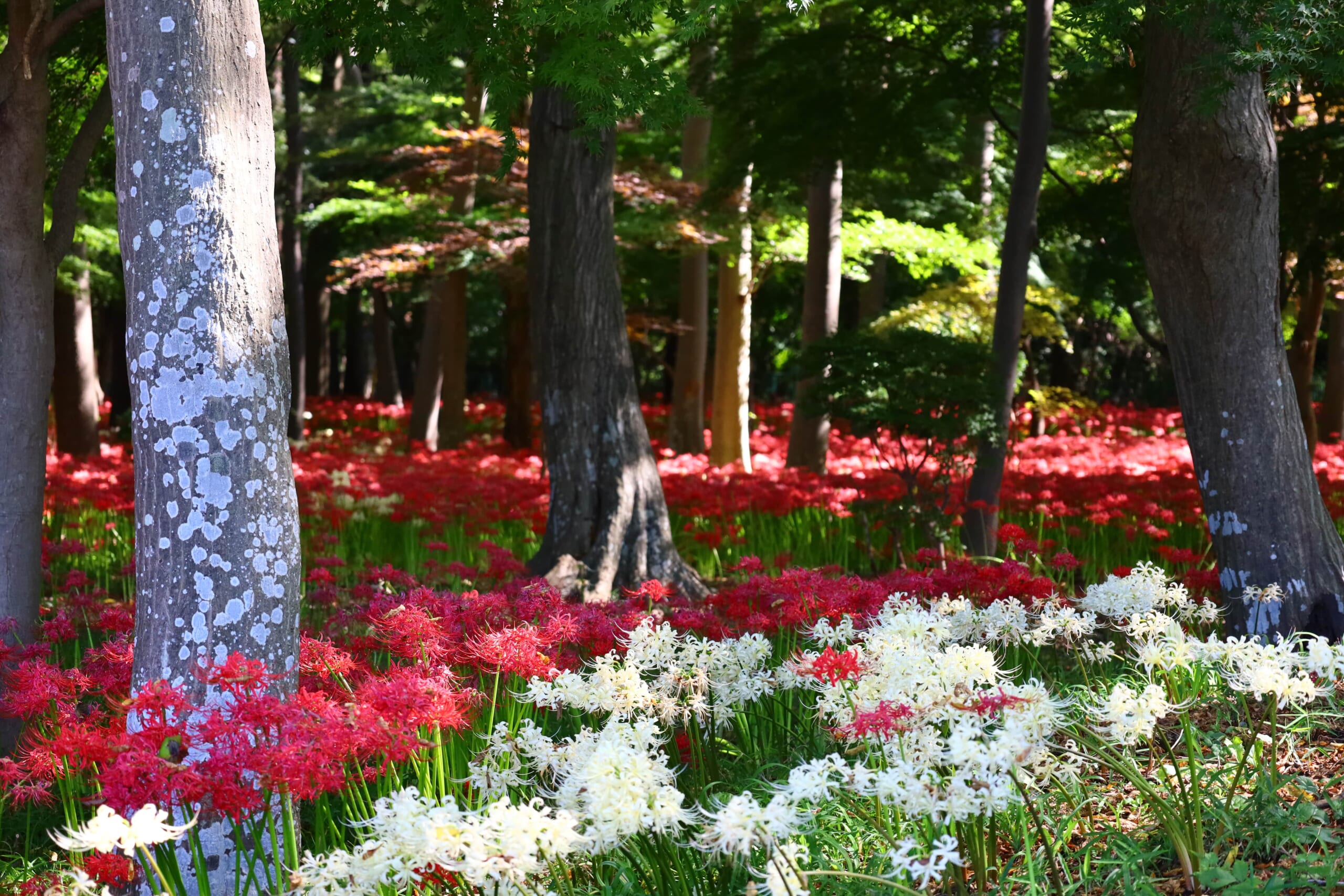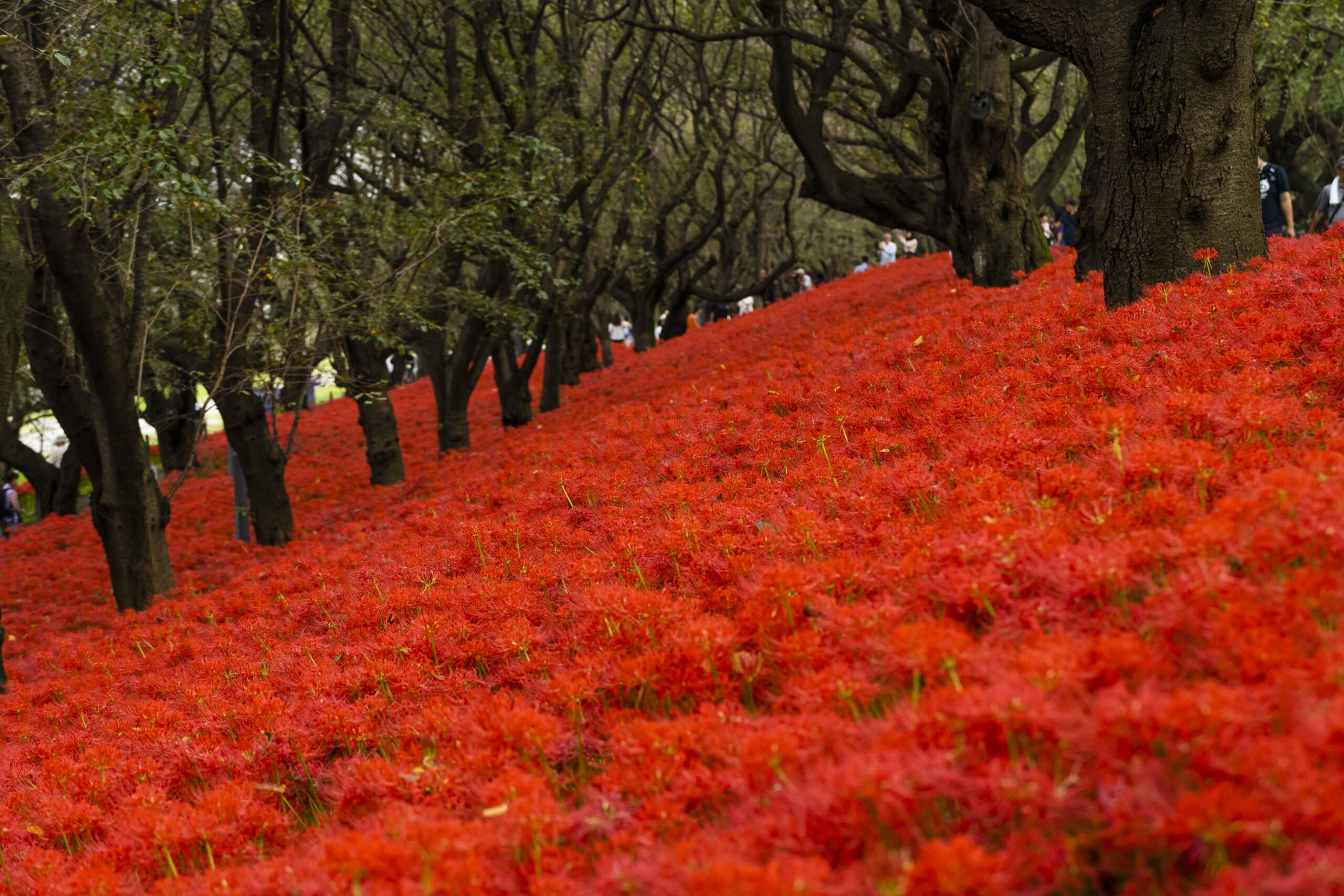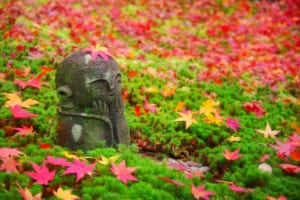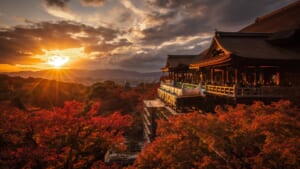10 Beautiful Spots to See Spider Lilies (Higanbana) near Tokyo
From Japan’s biggest Higanbana field to hidden gems: the best places to see Higanbana
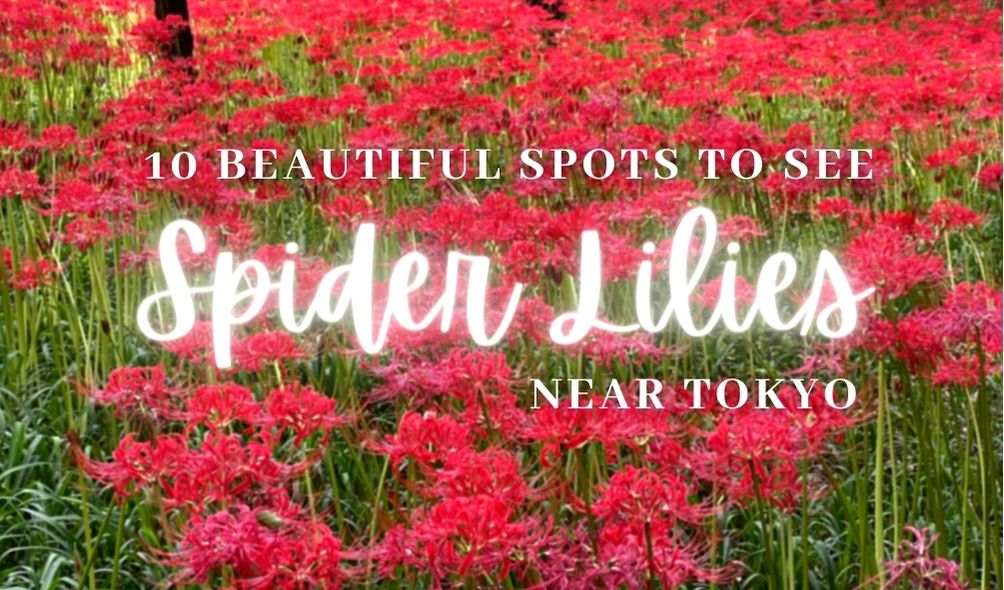
Everyone knows about Japan’s famous cherry blossoms, and many are also familiar with momiji or autumn leaves. But what you may not know so much is that in Japan, different types of flowers are enjoyed almost all year round. Wisterias in March, azaleas in April-May, hydrangeas in June-July, and right at the end of summer and the beginning of fall, before the start of the autumn leaves, we have the higanbana or red spider lilies.
Right at the end of summer and the beginning of fall, before the autumn leaves start, we have the higanbana or red spider lilies. Those of you who like manga and anime may be familiar with these flowers. They appear in Jigoku no Shojo, Inuyasha or in the recent Demon Slayer, playing a key role in the plot later on.
Although beautiful, these flowers symbolize death in Japan, and although their official name is manjushage, they are also known as “hell flowers” or even “ghost flowers”. But today most people know them better by the name higanbana, which means autumn equinox flower.
About the Spider Lilies
In Japanese Buddhist mythology the world of the living and the dead is divided by the Sanzu River. The world on the other side of the Sanzu River (the side of the dead) is said to be the Higan (彼岸), a Buddhist term that is written with the same kanji as Higanbana (彼岸花). The world on this side of the River, the world of the living, is called Shigan.
In Buddhism, it’s believed that the two worlds become more united on specific dates in spring and autumn (coinciding with the summer and autumn equinoxes). It is also said that red spider lily flowers bloom on the banks of the Sanzu River.
But there may be a more practical explanation as to why these flowers are associated with death. It is true that they are often found on graves, but also on the banks of rivers or in fields where they are used to protect the crop from small animals such as rodents. And the fact is that the bulbs of the red spider lilies contain poison.
In ancient times, the bodies of the deceased were often buried in the ground. So there is also a theory that these flowers were planted for the same reason as for crops, to protect the bodies of animals.
1. Kinchakuda Higanbana Fields
The number one in the list and the most popular spot for Red Spider Lilies is the Kinchakuda Manjushage Park (巾着田曼珠沙華公園), located in Hidaka City, Saitama Prefecture. Is Japan’s biggest Higanbana field, with over 500 millions of beautiful Higanbana flowers in the peak season.
The Kinchakuda Manjushage Festival (巾着田曼珠沙華まつり) is held from mid to late September annually.
For more info: Kinchakuda Higanbana Fields: Enjoy Fiery Red Flowers near Tokyo!
 Access Access |
15 mins walk from Koma Station |
|---|---|
 Address Address |
巾着田管理事務所, 125-2 Komahongo, Hidaka, Saitama 350-1251 |
 Business Hours Business Hours |
08:00-17:00 |
 Price Price |
500 yen |
 Payment method Payment method |
Cash, Suica |
 Official Website Official Website |
https://kinchakuda.com/ |
 Nearest station Nearest station |
Koma Station |
2. Fuchu City Kyodo no Mori Museum
If you prefer a place within Tokyo, the Fuchu City Folk Forest Museum (府中市郷土の森博物館) have 350,000 red spider lilies that visitors can enjoy during September. The Fuchu City Folk Forest is an indoor and outdoor museum that represents the nature of Fuchu.
In the past, rice paddies spread near the Tama River, and many red spider lilies bloomed along the banks and irrigation ditches. The museum staff started planting them more than 10 years ago.
 Access Access |
20 min walk from Fuchuhommachi Station |
|---|---|
 Address Address |
183-0026 Tokyo, Fuchu, Minamicho, 6−32 |
 Business Hours Business Hours |
09:00-17:00 |
 Closed Closed |
Mondays |
 Price Price |
300 yen |
 Official Website Official Website |
http://www.fuchu-cpf.or.jp/museum/index.html |
 Nearest station Nearest station |
Fuchuhommachi Station |
3. Nogawa Park
Still in Tokyo, we have the Nogawa Park (野川公園), a metropolitan park located in Chofu City. The vast park offers different facilities, such as a barbecue area. On the north side of the park there’s the Nature Observation Garden, where visitors can enjoy red and white spider lilies.
Chofu and Fuchu are close to each other, so in one morning you can go to both places if one spot is not enough for you and you want more flowers pictures!
 Access Access |
12 minute walk from Shin-Koganei Station or Tama Station |
|---|---|
 Address Address |
181-0015 Tokyo, Mitaka-shi, Osawa, 6−4−1 |
 Business Hours Business Hours |
9:30 –16:30 (Nature Observation Garden) |
 Closed Closed |
Mondays |
 Price Price |
Free |
 Official Website Official Website |
http://musashinoparks.com/kouen/nogawa/ |
 Nearest station Nearest station |
Shin-Koganei Station or Tama Station |
4. Showa Memorial Park
When it comes to enjoying flowers in Tokyo, one of the best places to go is always without a doubt is the Showa Memorial Park (昭和記念公園), a national park located in Tachikawa City.
The park was opened in 1983 to commemorate the emperor’s Golden Jubilee, and there is a small museum dedicated to the Showa emperor. Loved by many as an urban oasis, Showa Memorial Park is famous at all times of the year, in spring for the cherry blossoms and tulips, in autumn for the momiji (autumn leaves). In September, the park turns red with 20,000 red spider lilies.
More info: Showa Memorial Park : Best Flower Park in Tokyo
 Access Access |
15 min walk from Tachikawa Station |
|---|---|
 Address Address |
3173 Midoricho, Tachikawa, Tokyo 190-0014 |
 Business Hours Business Hours |
09:30-17:00 |
 Closed Closed |
No closing days |
 Price Price |
450 yen |
 Official Website Official Website |
https://www.showakinen-koen.jp/ |
 Nearest station Nearest station |
Tachikawa Station |
5. Mizumoto Park
Another popular park in Tokyo for flower viewing is Mizumoto Park (水元公園), in Katsushika ward. There’s a place inside the park called Higanbana Hill, where visitors can enjoy beautiful Spider Lilies.
Mizumoto Park it’s the biggest park within the 23 special wards of Tokyo and unlike the Showa Memorial Park, doesn’t have any entrance fee.
 Access Access |
32 min walk from Satte Station |
|---|---|
 Address Address |
887-3 Uchigouma, Satte, Saitama 340-0103 |
 Business Hours Business Hours |
Open 24 hours |
 Closed Closed |
No closing days |
 Price Price |
Free |
 Official Website Official Website |
https://gongendo.jp/ |
 Nearest station Nearest station |
Satte Station |
6. Sokoin Temple
For something different, Sokoin Temple (祖光院) in Matsudo City, Chiba Prefecture, is also one of the top spots around Tokyo. The temple have about 300,000 red spider lilies in a wooded area behind the main hall.
You can enjoy the view of the beautiful flowers as well as an ancient Japanese temple.
 Access Access |
9 min walk from Tokiwadaira Station |
|---|---|
 Address Address |
352 Kanegasaku, Matsudo, Chiba 270-2251 |
 Official Website Official Website |
Tokiwadaira Station |
7. Gongendo Park
Back to Saitama Prefecture, the Gongendo Park (権現堂公園) is another popular spot with approximately 3 million higanbana flowers.
The park is very large and is divided into different zones, a bit separated from each other. To go to see the red spider lilies you have to go to the area called Satte Gongendo Sakurazutsumi. If you feel like walking, you can go by foot but takes around 30 minutes. Alternatively, you can take the Asahi Bus bound for Goka Town Office and get off at Gongendo.
During Spring the Gongendo park is also a nice cherry blossom viewing spot.
 Access Access |
32 min walk from Satte Station |
|---|---|
 Address Address |
887-3 Uchigouma, Satte, Saitama 340-0103 |
 Business Hours Business Hours |
Open 24 hours |
 Closed Closed |
No closing days |
 Price Price |
Free |
 Official Website Official Website |
https://gongendo.jp/ |
 Nearest station Nearest station |
Satte Station |
8. Shinookahachimandai Shrine
Still in Saitama Prefecture, we found another spot recommended in many Japanese websites. Shinookahachimandai Shrine (篠岡八幡大神社), located in Iwatsuki, is known as a hidden gem for spider lilies.
Although as we explained above, higanbana flowers are closely linked to Buddhism, in Shinookahachimandai Shrine it’s possible to see them in a Shinto shrine.
 Access Access |
12 min bus from Urawa-misono Station (or 25 min bus from Higashi-Kawaguchi Station) |
|---|---|
 Address Address |
810 Sasakubo, Iwatsuki Ward, Saitama, 339-0034 |
 Price Price |
Free |
 Official Website Official Website |
http://www.saitama-jinjacho.or.jp/shrine/9905/ |
 Nearest station Nearest station |
Urawa-misono Station |
9. Hinata Higanbana no Sato
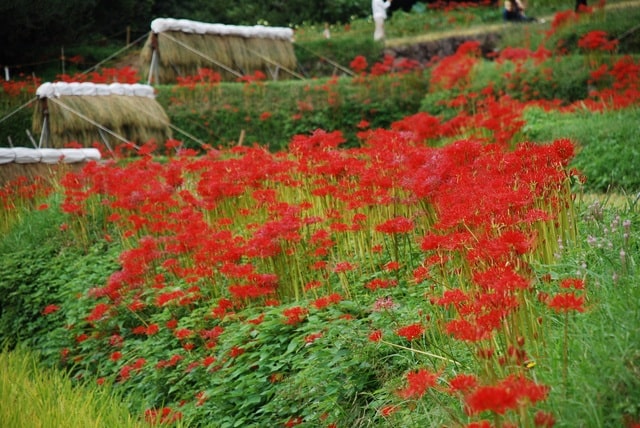
Selected as one of Kanagawa’s top 100 flower viewing spots Hinata Higanbana no Sato (日向 彼岸花の里), located in Isehara city, is one of the most famous Higanbana spots in Kanto. Hinata Higanbana no Sato is a more natural , since it’s not an indoor garden but the flowers are used to protect the crops as in the past.
From Isehara Station take a bus to Hinatayakushi.
 Access Access |
24 min bus from Isehara Station |
|---|---|
 Address Address |
Hinata, Isehara, Kanagawa 259-1101 |
 Business Hours Business Hours |
Open 24 hours |
 Closed Closed |
No closing days |
 Price Price |
Free |
 Official Website Official Website |
https://www.city.isehara.kanagawa.jp/kankou_guide/ |
 Nearest station Nearest station |
Isehara Station |
10. Gugyoji Temple
If you prefer something more distant and less known, this may be the place for you. Located in Joso City, Ibaraki Prefecture, Gugyoji Temple is a buddhist temple with about 50,000 red spider lilies planted in its grounds.
 Access Access |
30 min walk from Kita-Mitsukaido Station |
|---|---|
 Address Address |
303-0041 Ibaraki, Joso, Toyookamachiko, 1 |
 Official Website Official Website |
http://www.gugyoji.jp/ |
 Nearest station Nearest station |
Kita-Mitsukaido Station |
You can enjoy a wide variety of flowers in Japan throughout the year. Check out our ultimate guide to flowers in Japan and find the best seasonal blooms!
I hope you liked the list! For more places to enjoy autumn in Japan, you can check out these articles too 🙂
▽Related Articles▽
▼Editor’s Picks▼
Written by
From Barcelona to Tokyo. Coffee & Adventure lover.
I started to like Japan because of the anime, music and dramas, but after my first trip to the country I found what I love the most: traveling around, the culture and history. I have travelled a lot in Japan, but I still have many places to discover that I want to share with you. Let’s discover Japan together!
Also, as a foreigner living in Japan for over 6 years I understand what kind of things are difficult when you move here and I want to help other people in the same situation that I have in the past.





